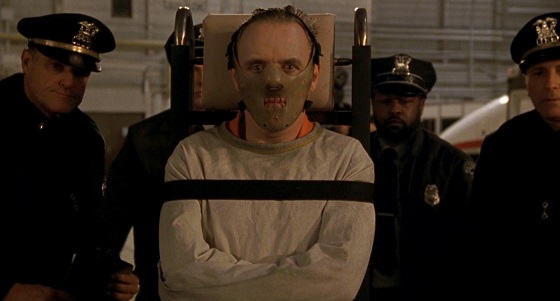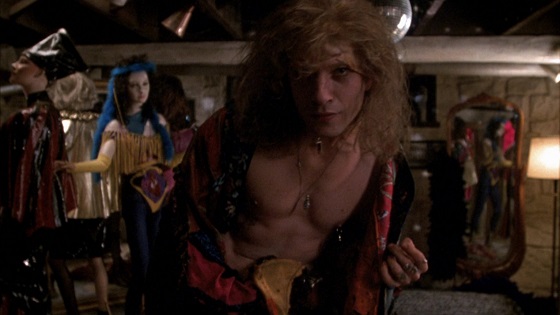Horror fans everywhere are celebrating the Oscar success of Guillermo del Toro’s The Shape of Water, which won best picture and best director (among a handful of other honors), and Jordan Peele’s Get Out, which took best original screenplay, at this year’s awards. Horror(ish) movies at the Oscars are rare, but not unheard of. The last (and only, until now) horror(ish) movie to win the Academy Award for Best Picture was 1991’s The Silence of the Lambs.

The Silence of the Lambs is about an FBI trainee named Clarice Starling (Jodie Foster from The Beaver and The Little Girl Who Lives Down the Lane) who is asked to go into a maximum security facility and interview a notoriously brilliant serial killer named Dr. Hannibal “The Cannibal” Lecter (Magic’s Anthony Hopkins in his career-defining role). The hope is that, by talking to Lecter, Clarice might be able to gain some insight that will help the Bureau catch an at-large serial killer known only as Buffalo Bill (The Mangler’s Ted Levine) who, puzzlingly, leaves his victims alive for a few days between abducting them and killing them. When a senator’s daughter winds up being kidnapped by Buffalo Bill, the stakes are raised, and Lecter takes advantage of the desperate situation and decides to exploit it for personal gain. Clarice has to decide how much she can trust Lecter, racing the clock to stop Buffalo Bill before he strikes again.

Like The Shape of Water, The Silence of the Lambs is not a traditional horror movie. Adapted from the Thomas Harris novel by screenwriter Ted Tally (All the Pretty Horses) and directed by the late Jonathan Demme (Stop Making Sense, Philadelphia), it’s a little more highbrow than the usual killer-chasing-kids-around-the-woods flick (even if it does feature cameos from both Roger Corman and George Romero). It’s a complicated crime drama, with twists and turns at every step. And, despite its dark subject matter, it’s also the last feature to win all of the “Big 5” at the Academy Awards (Best Picture, Best Director, Best Screenplay, Best Actor, and Best Actress). Whether one considers The Silence of the Lambs a horror movie or not, one thing is for sure: Hannibal Lecter is a horror villain.

Dr. Hannibal Lecter was the role of a lifetime for Anthony Hopkins, and the talented actor made the most of it. Lecter is one of those characters who is always the smartest person in the room, even if he’s locked up on the other side of bulletproof glass. He’s cunning and sly, but also ruthlessly brutal, and the constant head games that he plays with his captors always wind up shifting the balance of power to his side. And Dr. Lecter does everything he does with an effortless attitude, like he’s above the rest of the world. And in his mind, he probably is, all except for Clarice, of course, for whom he seems to have a fondness. Despite only being onscreen for about twenty-five minutes of a two-hour movie, Hannibal Lecter steals the show. He was even named the Number One Villain of All Time (narrowly beating out Norman Bates and Darth Vader) in a 2003 American Film Institute list (Clarice Starling came in sixth out of the heroes).

But Hannibal Lecter is not even the real villain in The Silence of the Lambs. Buffalo Bill, the active murderer whose real name in the film is Jame Gumb, is a composite of several different real-life serial killers. He dumps his victims in wetlands with foreign objects inserted into them like The Green River Killer. His ultimate goal is to construct a “woman suit” out of the skins of his victims like Ed Gein. He abducts the senator’s daughter by pretending to have a broken arm so that she’ll help him load some furniture into his van, a technique used by Ted Bundy. And finally, his penchant for keeping his victims prisoner in a pit in his home is a move right out of the playbook of Gary M. Heidnik.

Aside from being a “super-serial killer,” the character of Buffalo Bill took some heat upon the movie’s release as being a homophobic depiction of a gay male. For his part, Jonathan Demme refuted the claim, stating that Bill was not gay, but was so full of self-loathing that he wanted to become a woman so that he’d become something that was as far from his normal self as possible. In this way, Buffalo Bill is an androgynous and asexual character, at least according to Demme. Homosexual or heterosexual, transgender or cisgender, Buffalo Bill is creepy.

The Silence of the Lambs may have swept the Big Five, but there were aspects of the movie that did not win, nor were even nominated, for the Oscars that probably should have been. Cinematography is one of them. Jonathan Demme and cinematographer Tak Fujimoto (Gladiator, The Sixth Sense) went to great visual lengths to form a connection between the audience and Clarice, even in a movie full of equally charismatic characters. When Clarice speaks, she looks at whoever she is talking to, but when the other characters speak to her, Demme would have them look directly into Fujimoto’s camera, as if they were speaking directly to the audience. During the scenes between Clarice and Lecter, the pair is separated by a thick Plexiglas wall, but there is always a reflection of one of them in the glass when the other is on camera, emphasizing the fragile bond between the two characters – so close, yet so far away. At first glance, the photography in The Silence of the Lambs looks straightforward, but Demme and Fujimoto do a lot of subtle little things to subliminally convince the audience of who they should follow.

Another aspect of The Silence of the Lambs that probably deserved an Oscar nomination that it didn’t get is the score. Jonathan Demme enlisted the help of David Cronenberg’s main composer Howard Shore (Scanners, Crash, Videodrome) for the music to the film, and the score that he turned in is more elaborate and grandiose than his earlier works, full of lush orchestral themes as well as suspenseful minimalistic pieces. The Silence of the Lambs marks a turning point in Shore’s career; although he kept working on the schlock movies that he was doing with Cronenberg, he was also able to take on projects like the Twilight and The Lord of the Rings movies. He had a healthy career before, but The Silence of the Lambs helped Howard Shore jump the shark as a composer.

Neither The Shape of Water nor The Silence of the Lambs are considered true “horror” movies by many diehard fans of the genre, despite the fact that one has a sea monster and the other has two of the most heinous serial killers to ever grace the screen. Both also have one other thing that most “horror” movies don’t – an Academy Award for Best Picture.
